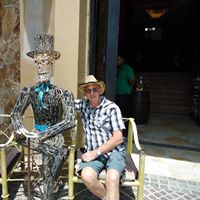David M Heap
age ~76
from Fond du Lac, WI
- Also known as:
-
- David Matthew Heap
- David L Heap
- David Lynn Heap
- Dave L Heap
- Dave M Heap
- David Heaps
- Phone and address:
-
39 Greenbriar Ct, Fond Du Lac, WI 54935
9209332913
David Heap Phones & Addresses
- 39 Greenbriar Ct, Fond du Lac, WI 54935 • 9209332913
- 602 Skyline St, Stillwater, OK 74075 • 4055331525
- 238 3000, Bountiful, UT 84010 • 8012928778
Resumes

Technical Manager - Diesel Programs
view sourceLocation:
Fond Du Lac, WI
Industry:
Consumer Goods
Work:
Mercury Marine Oct 2011 - Oct 2013
Design Engineer
Mercury Marine Oct 2011 - Oct 2013
Technical Manager - Diesel Programs
Mercury Marine Apr 2004 - Oct 2011
Pdm Application Engineer
Ptc Jan 2000 - Mar 2004
Senior Mcad Technical Support Engineer
University of Utah Medical Center Oct 1997 - Dec 1999
R and D Engineer
Design Engineer
Mercury Marine Oct 2011 - Oct 2013
Technical Manager - Diesel Programs
Mercury Marine Apr 2004 - Oct 2011
Pdm Application Engineer
Ptc Jan 2000 - Mar 2004
Senior Mcad Technical Support Engineer
University of Utah Medical Center Oct 1997 - Dec 1999
R and D Engineer
Education:
Oklahoma State University 2008 - 2008
Master of Science, Masters, Management, Engineering University of Utah 1999 - 1999
Bachelors, Bachelor of Science, Mechanical Engineering
Master of Science, Masters, Management, Engineering University of Utah 1999 - 1999
Bachelors, Bachelor of Science, Mechanical Engineering
Skills:
Root Cause Analysis
R&D
Design For Assembly
Design Engineering
Management
Leadership
Ptc Creo
Dfmea
Fmea
Software Development
Engineering Change Management
Pro Engineer
Strategic Planning
Engineering
R&D
Design For Assembly
Design Engineering
Management
Leadership
Ptc Creo
Dfmea
Fmea
Software Development
Engineering Change Management
Pro Engineer
Strategic Planning
Engineering

David Heap
view source
David Heap
view source
David Heap
view sourceLocation:
United States

David Heap
view source
David Heap
view sourceWikipedia

David Porter Heap
view sourceDavid Porter Heap (March 24, 1843-October 25, 1910) was an American engineer, born in San Stefano, Turkey, and educated at Georgetown College, and at West
Us Patents
-
Marine Drive Housing
view source -
US Patent:D583830, Dec 30, 2008
-
Filed:Sep 19, 2006
-
Appl. No.:29/266327
-
Inventors:Benjamin S. Burkhart - Stillwater OK, US
David M. Heap - Stillwater OK, US
Keith W. Schmidt - Stillwater OK, US -
Assignee:Brunswick Corporation - Lake Forest IL
-
International Classification:1501
-
US Classification:D15 4
-
Dna Amplification Using Electrolyte Conductance Heating And Temperature Monitoring
view source -
US Patent:20020151039, Oct 17, 2002
-
Filed:Aug 12, 1999
-
Appl. No.:09/373041
-
Inventors:CARL T. WITTWER - SALT LAKE CITY UT, US
MARK G. HERRMANN - CLINTON UT, US
DAVID M. HEAP - BOUNTIFUL UT, US -
International Classification:C12M001/40
-
US Classification:435/286100, 435/287200, 435/303100, 435/091200, 392/323000, 204/601000
-
Abstract:A system for thermal cycling a sample utilizing electrolyte conductance heating. An electric current is passed through the sample to increase its temperature due to resistance heating. As the sample acquires more thermal energy its viscosity changes, which causes a change in resistance. Because of this characteristic, temperature of the sample can be measured as a function of resistance and temperature can be controlled using resistance of the solution as feedback to a circuit which controls the heating of the sample by electrical conductance.
-
Performance Monitor Apparatus And Method
view source -
US Patent:42311063, Oct 28, 1980
-
Filed:Jul 13, 1978
-
Appl. No.:5/924242
-
Inventors:David L. Heap - Centerville UT
Allen L. Kenner - Magna UT -
Assignee:Sperry Rand Corporation - New York NY
-
International Classification:G06F 900
-
US Classification:364900
-
Abstract:Performance monitor apparatus is adapted to monitor various computer program events such as the length of time required to execute a particular program, the number of times a particular program or instruction sequence is executed during some predetermined period, etc. The apparatus includes a buffer for receiving an instruction data word from a data processor and for temporarily storing the data word, a register having a plurality of bistable elements each of which is adapted to produce either a first or second output signal in response to receipt of a first or second operation signal respectively and receipt of a select signal, a select logic circuit for applying a select signal to a particular bistable element identified by certain bits of the instruction data word stored in the buffer, and an operation logic circuit for supplying to the bistable elements either a first or second operation signal as determined by certain other bits of the instruction data word stored in the buffer. Each bistable element represents a different event or occurrence in a computer program being monitored and the signals produced by the bistable elements indicate the nature of the monitoring operation to be performed. The signals are supplied to timing and counting apparatus which then either measures the time over which the signals are produced or increments a count in response to receiving the signals.
License Records
David Matthew Heap
Address:
Bountiful, UT
License #:
368548-2202 - Expired
Category:
Engineer/Land Surveyor
Type:
Professional Engineer
David W Heap
License #:
91762 - Expired
Issued Date:
Apr 1, 1975
Expiration Date:
Aug 27, 2000
Type:
Broker
Googleplus

David Heap
Work:
The PC Doctor

David “Brown Stuff” Heap

David Heap

David Heap

David Heap

David Heap

David Heap

David Heap
Plaxo

David O. Heaps
view sourceSundance, UT

David Heaps
view sourceBountiful, UTLoan Officer at City First Mortgage Services

David Heaps
view sourceAstraZeneca

David Heap
view sourceSydneyDirector at Insight & Influence
Youtube
Classmates

David Heap
view sourceSchools:
Mt. Markham High School West Winfield NY 1968-1972
Community:
Mary Ratcliffe, Ellery Butler, Burton Casler, R Dunn

David Heap
view sourceSchools:
St. Paul's High School Covington LA 1979-1983
Community:
Gordon Natal, Charles Labbe, John Clemens

St. Paul's High School, C...
view sourceGraduates:
David Heap (1979-1983),
David Gauthier (1980-1982),
Scott Crawford (1992-1996),
Jimmy Corkern (2005-2009)
David Gauthier (1980-1982),
Scott Crawford (1992-1996),
Jimmy Corkern (2005-2009)

David Heap
view source
David Heap
view source
David Heap
view source
David Heap
view source
David Heap
view source
David Heap
view source
David Heap Leng
view source
David Heap
view sourceFlickr
Myspace
Get Report for David M Heap from Fond du Lac, WI, age ~76














